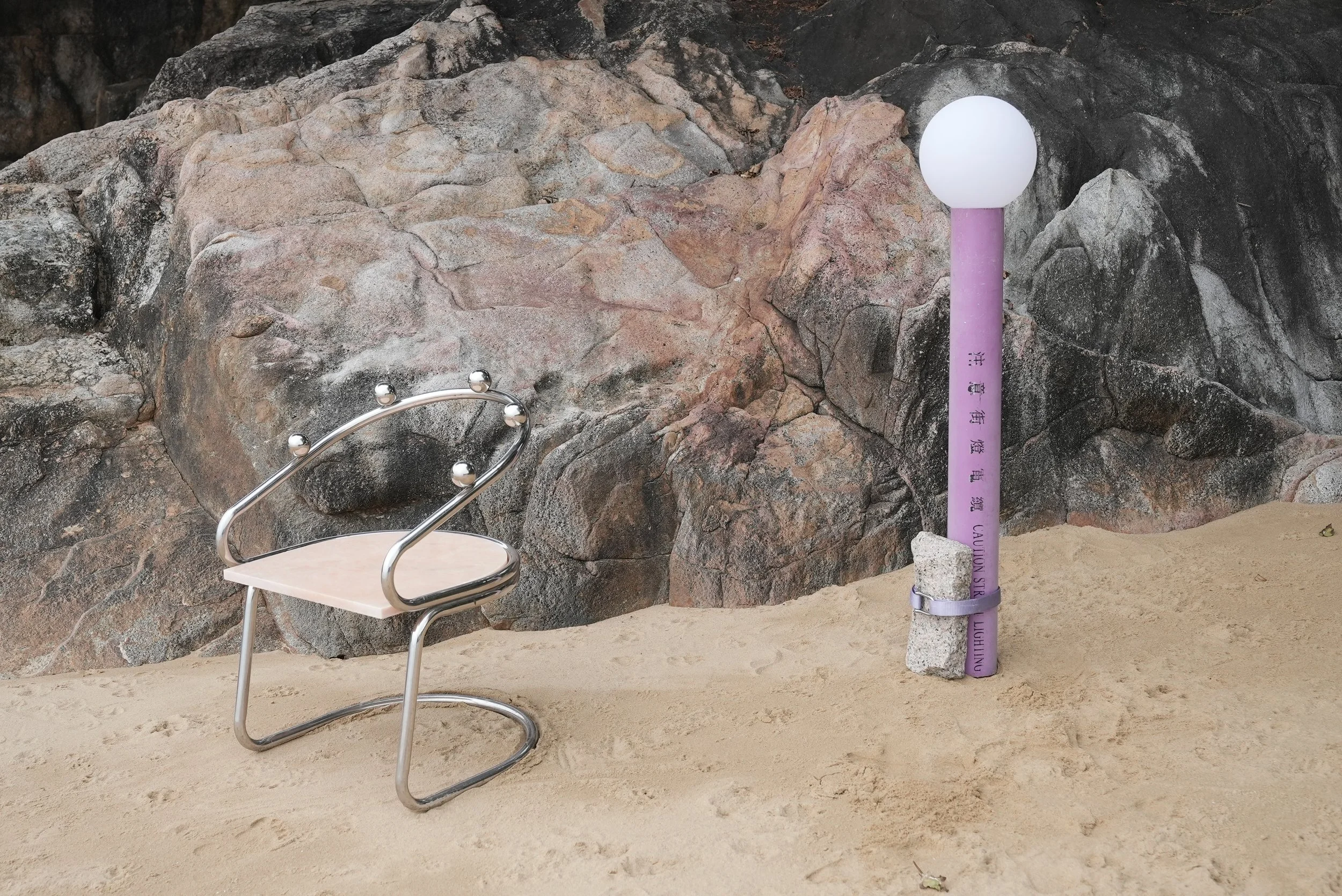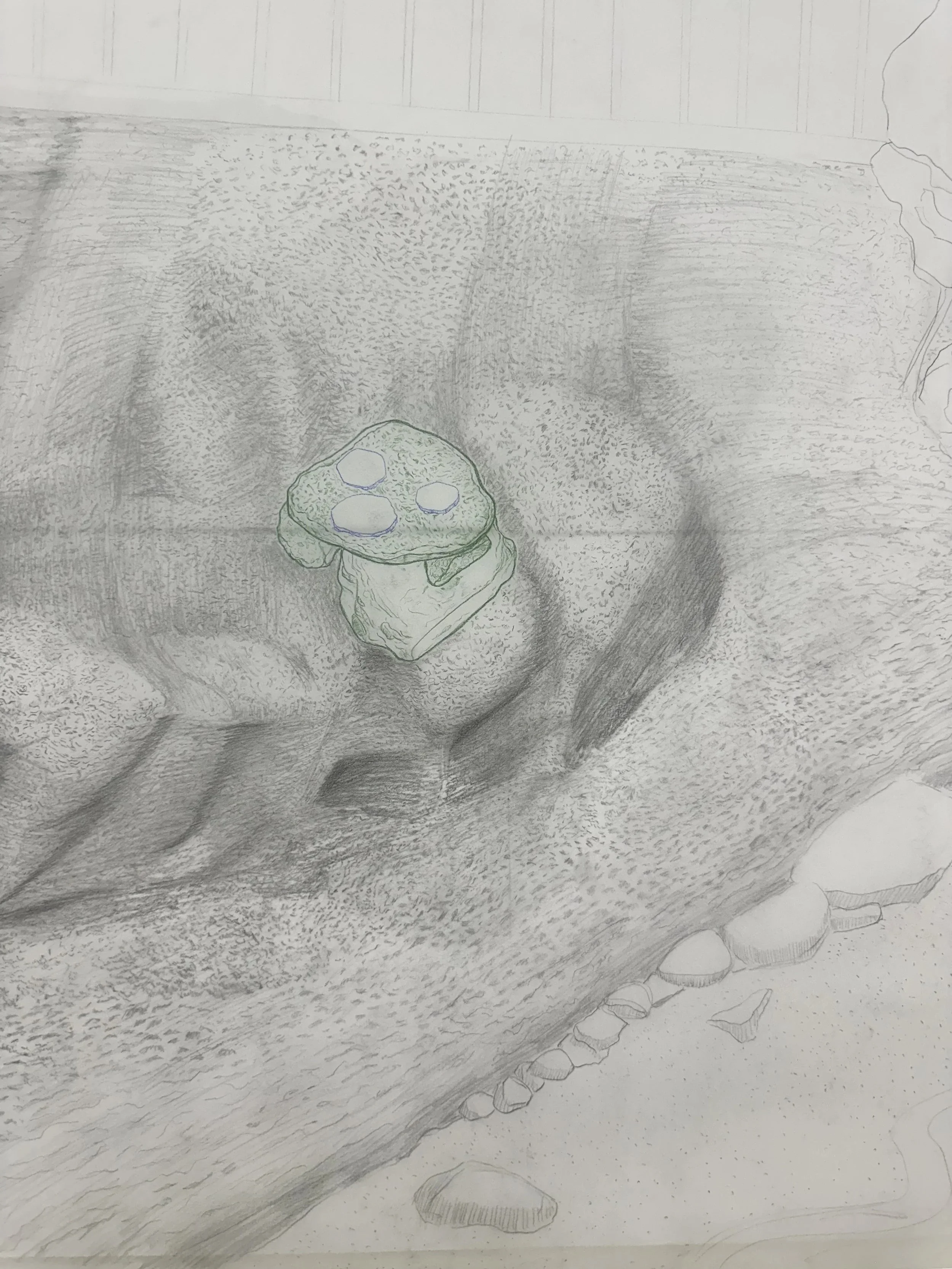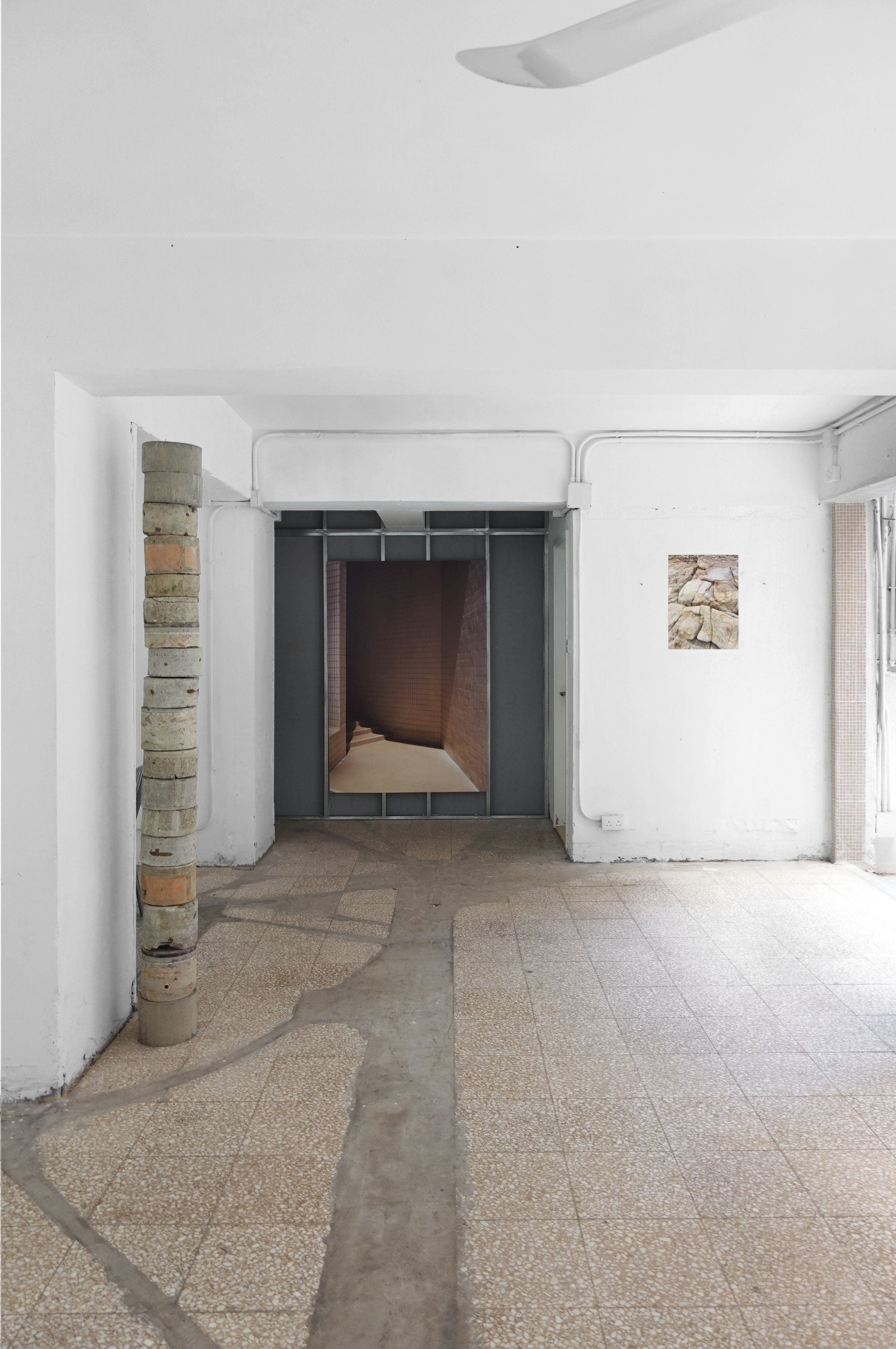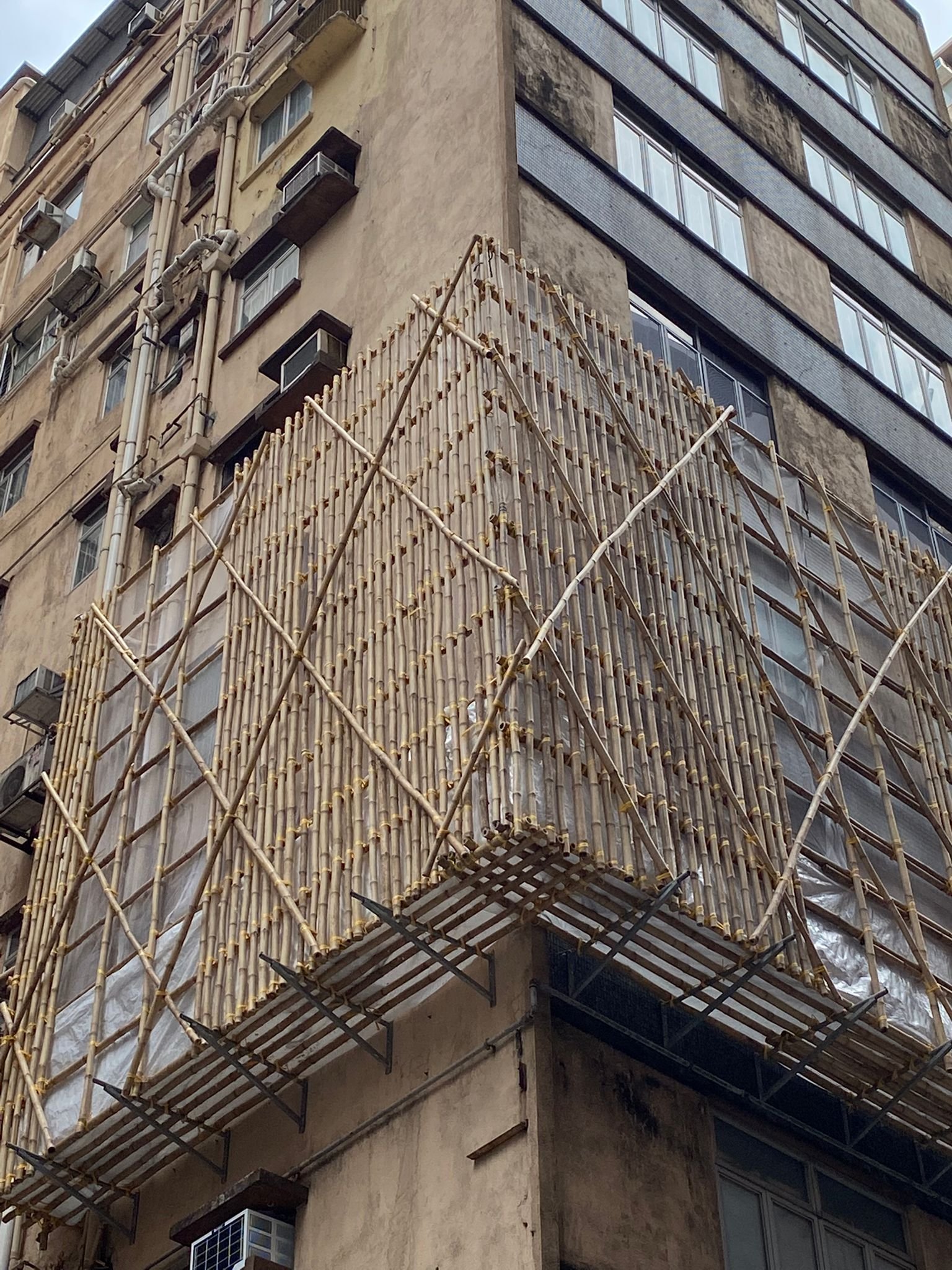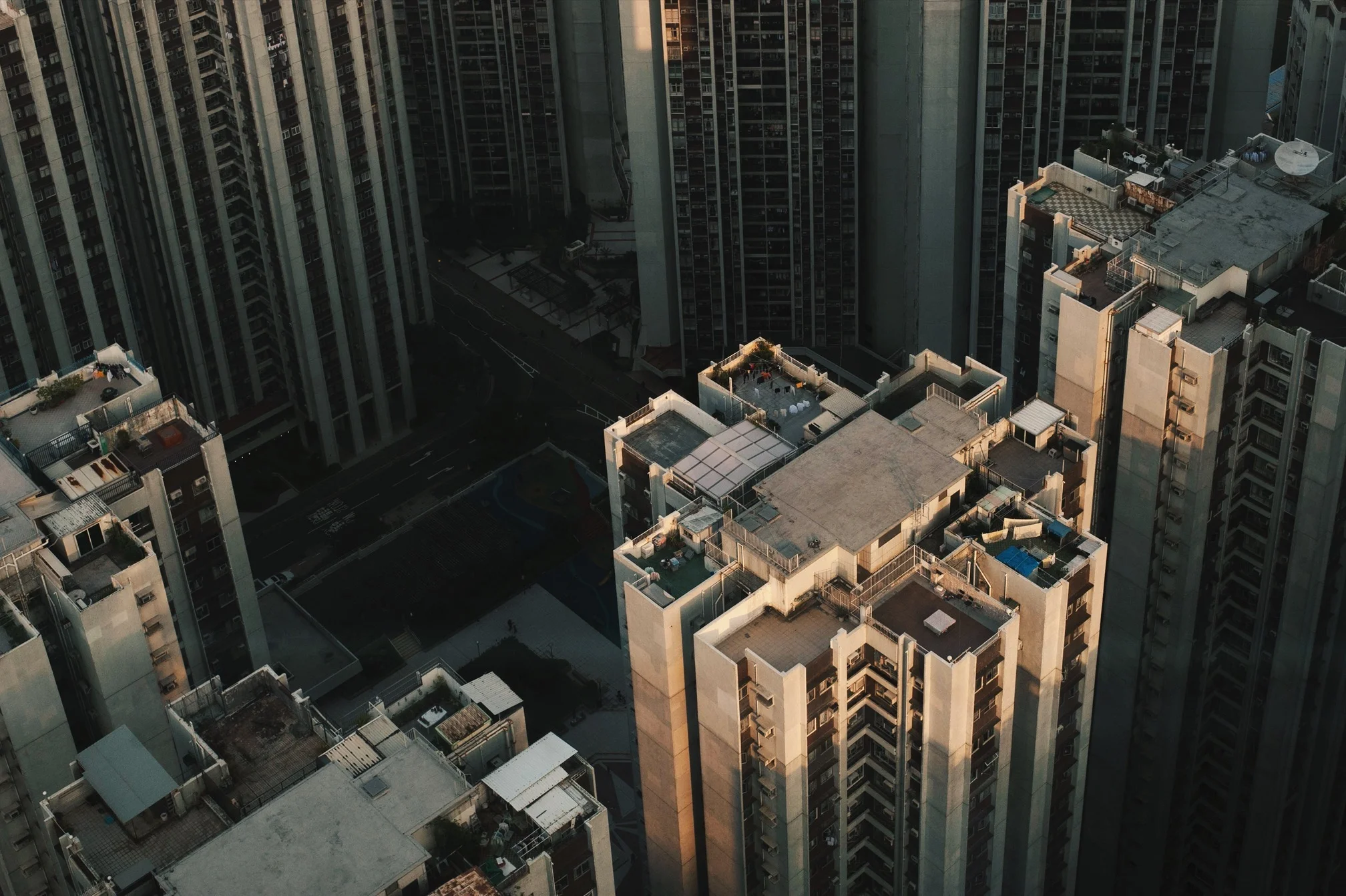Coastal Cooking Station / Ma Umi Residencies / Installation / 2023
The vernacular kitchen was envisioned as an outdoor cooking station crafted from locally available resources, with the natural coastal beauty of Ishigaki serving as an inherent backdrop for the project. A small beach, defined by a mixture of eroded limestone and granite walls, resembled a spacious room capable of accommodating both a cooking station and a tea area.
In this setting, it became evident that the design should embody and symbolize the resilience of the island in various ways. Her original concept suggested the adaptability and ecological balance in utilising local materials and traditional practices for food preparation. The reef abundantly provides seaweed, shells, and fish, yet there is currently no platform for directly processing them at the shoreline. This absence prompted the development of a unique language, which played a pivotal role in crafting an outdoor 'Sea to Table' kitchen station/installation. Natasza's fascination with vernacular kitchens and their diverse manifestations began in a small man-made restaurant in Hong Kong and deepened during her recent travels through Mexico.
Another key aspect initiating the project was the recent eruption of the undersea Fukutoku-Okanoba volcano, located over 1000 kilometres away on Ogasawara Island. This natural calamity has led to a substantial quantity of floating pumice reaching the shores of the Okinawa islands. Therefore this event has given rise to temporary material repositories, ecosystems, and inter-tidal topographies. Driven by the summer monsoon cycles and winds, the displaced material not only becomes the focal point but also serves as method for Natasza’s project.
At Green Beach, the Cooking Station took the form of a compact tower block constructed from pumice concrete, serving as a space for tea, alongside a horizontal slab designated for activities like washing, cutting, and grilling. The flat table was intricately woven among the rocks, using the beach’s sand and corals as a foundation to give its shape. A large opening, defining a fire pit capable of accommodating pots or a grill, serves as a crucial element of the structure. Traditional cooking vessels and shells were gathered from the elderly members of the community and available for communal use. Drifted floats, plastic containers, and ropes, washed ashore, served as impromptu seats and tables, completing the setting.
During the residency, we arranged lunch and dinner gatherings with friends, where grilled fish, tempura, and stews were prepared right on the beach and showcased on social media. All the culinary tools and firewood are kept in the nearby cave, inviting community members to freely make use of the vernacular kitchen at their convenience. A few weeks after its inauguration, the cooking station endured the impact of numerous storms and high tides. It will likely remain usable until the next typhoon season, after which it is expected to gradually disintegrate, restoring the beach to its original setting.
Art Residency Programme: Ocean | Ma Umi Residencies
Location: Ishigaki Island, Okinawa Prefecture, Japan

